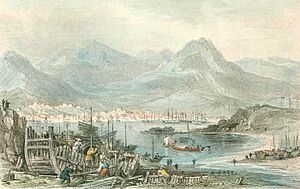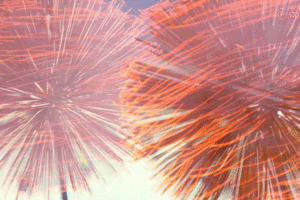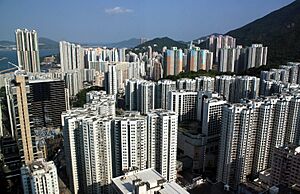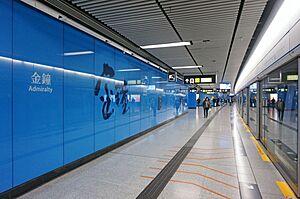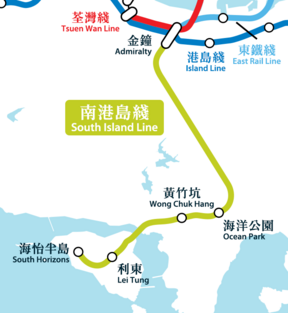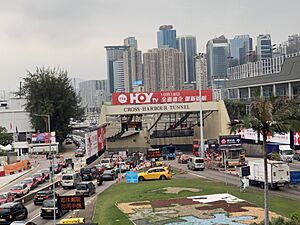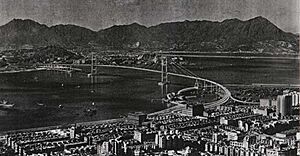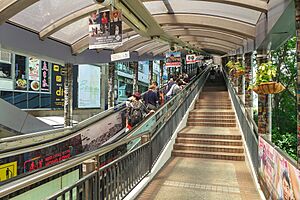Hong Kong Island facts for kids

Dusk view of Hong Kong Island as viewed from North Point, August 2011
|
|
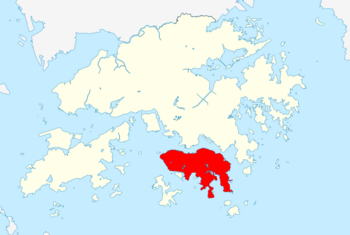
Location (in red) within Hong Kong
|
|
| Geography | |
|---|---|
| Coordinates | 22°15′52″N 114°11′14″E / 22.26444°N 114.18722°E |
| Area | 78.59 km2 (30.34 sq mi) |
| Highest elevation | 552 m (1,811 ft) |
| Highest point | Victoria Peak |
| Demographics | |
| Population | 1,188,500 (2023) |
| Pop. density | 16,390 /km2 (42,450 /sq mi) |
| Ethnic groups |
|
| Hong Kong Island | |||||||||||||||||||||||||||||||||||
|---|---|---|---|---|---|---|---|---|---|---|---|---|---|---|---|---|---|---|---|---|---|---|---|---|---|---|---|---|---|---|---|---|---|---|---|
| Traditional Chinese | 香港島 | ||||||||||||||||||||||||||||||||||
| Simplified Chinese | 香港岛 | ||||||||||||||||||||||||||||||||||
| Cantonese Yale | Hēunggóng dóu | ||||||||||||||||||||||||||||||||||
| Jyutping | Hoeng1 gong2 dou2 | ||||||||||||||||||||||||||||||||||
|
|||||||||||||||||||||||||||||||||||
Hong Kong Island (Chinese: 香港島; Jyutping: Hoeng1 gong2 dou2; Cantonese Yale: Hēunggóng dóu) is a major island in the southern part of Hong Kong. It was originally known simply as "Hong Kong." As of 2023, about 1,289,500 people live there. This makes it a very crowded place, with about 16,390 per square kilometre (42,400/sq mi) people per square kilometer.
Hong Kong Island is the second largest island in Hong Kong. The biggest is Lantau Island. Hong Kong Island is one of the three main areas of Hong Kong. The other two are Kowloon and the New Territories.
In 1842, after a war, Hong Kong Island was given to the United Kingdom. This was part of the Treaty of Nanking. The British then built the City of Victoria on the island. They named it after Queen Victoria. At that time, only about 3,000 people lived on the island. They lived in small fishing villages.
The northern-east part of the island is called Central. This area is the main hub for Hong Kong's history, politics, and economy. Many important government buildings are here. These include the Government House and the Legislative Council Complex. Big banks and financial companies like the Hong Kong Stock Exchange are also in Central.
The northern coast of the island faces Victoria Harbour. This deep harbor was key to Hong Kong's growth. Large trade ships could easily use it. The island has many famous tourist spots. These include "The Peak" and Ocean Park. You can also find many historical sites and big shopping malls. The island's mountains are popular for hiking.
The northern part of Hong Kong Island, along with Kowloon and Tsuen Wan New Town, forms the main city area of Hong Kong. This combined area is about 88.3 square kilometres (34.1 square miles). Around 3,156,500 people live there. This means it's very densely populated.
Locally, people often call the island "Hong Kong side" or "Island side." This helps tell it apart from other areas like "Kowloon side."
Contents
History of Hong Kong Island
Early Times and Chinese Rule
People have lived on Hong Kong Island for a very long time. Tools from 6,000 years ago have been found in Stanley.
Around 214 BC, the Qin dynasty of China took control of this area. Hong Kong Island became part of Panyu County. Later, in AD 331, it was part of Baoan County.
Old copper coins from the Sui, Tang, and Song dynasties have been found. These coins were discovered near where the Royal Hong Kong Yacht Club is today. This suggests that people were already trading on the island long ago.
During the Ming dynasty (around 1573), Hong Kong Island was part of Xin'an County. In 1661, the Qing dynasty ordered everyone living near the coast to move inland. This was to stop supporters of the old Ming dynasty from getting help. The ban was lifted in 1669. But not many people returned to Hong Kong Island right away.
British Rule Begins
After the First Opium War (1839–1842), Hong Kong Island was given to Great Britain in 1842. It became a British colony. At that time, only about 7,450 people lived on the island.
Japanese Occupation During World War II
World War II was a difficult time for Hong Kong. In the 1930s, the British thought Japan might attack. So, they built strong defenses, especially at Wong Nai Chung Gap.
The Battle of Hong Kong started on December 8, 1941. British, Canadian, and Indian soldiers, along with local volunteers, fought the Japanese. The Japanese quickly took control of the sky. They also had more soldiers. The defenders had to retreat from Kowloon.
On December 18, the Japanese reached North Point. They got to Wong Nai Chung Gap the next day. Soldiers fought hard to protect this important spot. It was a key passage between Central and the southern parts of the island. Many Japanese soldiers were hurt. But the Allied forces were defeated by December 23. Hong Kong surrendered to the Japanese on December 25, 1941. This day is often called "Black Christmas" by locals.
The Japanese occupation of Hong Kong began. Food became scarce, and prices went up a lot. The Japanese sent many people back to mainland China. Because of this, Hong Kong's population dropped from 1.6 million in 1941 to 600,000 in 1945.
After World War II
After World War II, many people moved to Hong Kong Island. The old Central area became too small. So, new areas like North Point and Aberdeen started to grow. These areas first became industrial. Later, places like Causeway Bay became new business centers. This happened as Hong Kong shifted away from manufacturing.
On July 1, 1997, Hong Kong Island, along with Kowloon Peninsula and the New Territories, was returned to China. This ended 156 years of British rule.
Areas and Neighborhoods
Even though Hong Kong Island is an island, it is not part of the Islands District. Instead, it has four main districts of Hong Kong:
Central and Western District
- Central (includes Admiralty, Tamar)
- Mid-Levels (West and Central) (includes SoHo)
- Sai Wan (includes Sai Ying Pun, Shek Tong Tsui and Kennedy Town)
- Sheung Wan
- Victoria Peak
- Mount Davis
- Lung Fu Shan (includes University of Hong Kong)
Wan Chai District
- Causeway Bay (includes Tai Hang, Tin Hau and Victoria Park)
- Happy Valley
- Jardine's Lookout
- Wan Chai
- Mid-Levels (East)
Eastern District
- North Point
- Quarry Bay (includes Taikoo Shing, Kornhill)
- Shau Kei Wan
- Chai Wan
- Siu Sai Wan
- Braemar Hill
- Fortress Hill
Southern District
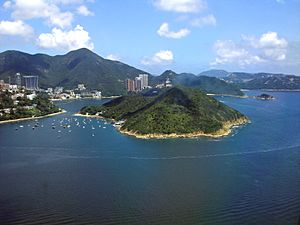
- Aberdeen
- Ap Lei Chau
- Repulse Bay
- Stanley
- Shek O
- Big Wave Bay
- Wong Chuk Hang (includes Ocean Park)
- Pok Fu Nam (includes Queen Mary Hospital, Sandy Bay)
- Tai Tam
- Tin Wan
- Cyberport
Island Geography
Hong Kong Island is the second largest island in the territory. Its area is about 78.59 km2 (30.34 sq mi). This includes about 6.98 km2 (2.69 sq mi) of new land created by filling in parts of the sea. The island makes up about 7% of Hong Kong's total land. It is separated from the mainland (Kowloon and the New Territories) by Victoria Harbour.
Mountains and Hills
Many hills in the middle of the island are part of country parks. These are protected natural areas.
| Name | Height (in metres) | Country Park | District |
|---|---|---|---|
| Victoria Peak | 552 | Pok Fu Lam Country Park | Central and Western District |
| Mount Parker | 532 | Tai Tam Country Park | Eastern District |
| Mount Kellett | 501 | Central and Western District | |
| High West | 494 | Pok Fu Lam Country Park | |
| Mount Gough | 479 | ||
| Mount Cameron | 439 | Aberdeen Country Park | Wan Chai District |
| Mount Butler | 436 | Tai Tam Country Park | Eastern District |
| Violet Hill | 433 | Southern District | |
| Jardine's Lookout | Wan Chai District | ||
| Mount Nicholson | 430 | Aberdeen Country Park | |
| Siu Ma Shan | 424 | Tai Tam Country Park | Eastern District |
| The Twins South | 386 | Southern District | |
| The Twins North | 363 | ||
| Mount Collinson | 348 | Shek O Country Park | |
| D'Aguilar Peak | 325 | ||
| Pottinger Peak | 312 | Eastern District | |
| Brick Hill | 284 | Southern District | |
| Mount Davis | 269 | Central and Western District | |
| Lung Fu Shan | 253 | Lung Fu Shan Country Park | |
| Braemar Hill | 200 | Eastern District | |
| Shouson Hill | 140 | Southern District | |
| Leighton Hill | Wan Chai District | ||
| Morrison Hill | |||
| Mount Parish |
Hiking Trails
The main hiking trail on Hong Kong Island is the Hong Kong Trail. It is 50 kilometers long and has 8 sections. The trail starts at Victoria Gap on the Peak and ends at Big Wave Bay. Parts of the Wilson Trail also pass through Tai Tam Country Park.
Marine Reserve
The Cape D'Aguilar Marine Reserve is the only marine reserve in Hong Kong. It is located at the southern tip of the island. It opened in 1996 to protect sea life. Scientists study the marine resources here, and it helps educate people about the ocean. Visitors are generally not encouraged, and water sports are not allowed.
Beaches
Many public beaches are found in the Southern District of Hong Kong Island. These include Deep Water Bay, Repulse Bay, Middle Bay, and Big Wave Bay. These beaches are popular for water sports and activities.
Historical Buildings and Sites
Because Hong Kong Island developed early, it has many historical buildings. Some of these are protected as "Declared Monuments."
Central and Western District Monuments
- University Buildings: Parts of the Main Building, Hung Hing Ying Building, Tang Chi Ngong Building, Fung Ping Shan Building, Eliot Hall, and May Hall at the University of Hong Kong.
- Schools: Main Building of St. Stephen's Girls' College, King's College, and parts of St. Joseph's College.
- Religious Sites: St. John's Cathedral, Jamia Mosque, and Man Mo Temple.
- Other Sites: Duddell Street Steps and Gas Lamps, Kom Tong Hall, and the Former French Mission Building.
Wan Chai District Monuments
- Religious Sites: Tin Hau Temple, Lin Fa Temple, and Yuk Hui Temple.
- Other Sites: The Race Course Fire Memorial and King Yin Lei.
Eastern District Monuments
- Law Uk Hakka House
- Old buildings at the Lei Yue Mun Barracks
- Rock Carving at Cape Collinson
Southern District Monuments
- University Building: The Exterior of University Hall at the University of Hong Kong.
- Religious Site: Hung Shing Temple.
- Other Sites: Rock Carvings at Big Wave Bay and Wong Chuk Hang, and Béthanie.
Population and People
As of 2023, about 1,188,500 people live on Hong Kong Island. This is about 15.8% of Hong Kong's total population. The island is very crowded, especially along its northern coast.
The Central and Western District and Wan Chai District have the highest average household incomes in Hong Kong. Wealthy areas on Hong Kong Island include The Peak, Happy Valley, Tai Tam, and Repulse Bay.
In 2021, most residents (85%) on Hong Kong Island were of Chinese background. The largest minority groups were Filipinos (5.6%), Indonesians (2.6%), and White people (2.5%).
Most people (80.4%) on Hong Kong Island speak Cantonese as their main language. About 10.6% speak English, and 3.3% speak Mandarin.
Getting Around Hong Kong Island
Trains (MTR)
Seven of the ten MTR train lines serve Hong Kong Island. The Island line and South Island line run only on Hong Kong Island. The Island line serves the northern coast with 17 stations. The South Island line connects four stations in Ap Lei Chau and Wong Chuk Hang to the north shore at Admiralty station.
Other MTR lines like the Tsuen Wan line and East Rail line connect Hong Kong Island's north shore to Kowloon and the New Territories.
Two other train systems are unique to Hong Kong Island:
- Hong Kong Tramways: These are the famous "ding-ding" trams. They run mostly along the northern coast, from Kennedy Town to Shau Kei Wan.
- Peak Tram: This is a special funicular railway. It links Central District to Victoria Peak. It offers amazing views!
Ferries
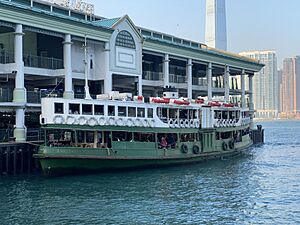
Hong Kong Island has four main ferry terminals: Central Ferry Piers, North Point Ferry Pier, Sai Wan Ho Ferry Pier, and Wan Chai Ferry Pier. From these piers, you can take ferries to Kowloon and other islands. There's also the Hong Kong Macau Ferry Terminal in Sheung Wan for trips to Macau.
A special "Water Taxi" ferry service offers sightseeing tours in Victoria Harbour. It stops at famous places like the Hong Kong Observation Wheel and International Financial Centre.
Roads and Tunnels
Major roads on Hong Kong Island include Connaught Road, Des Voeux Road, and Queen's Road.
Hong Kong Island is connected to Kowloon by several tunnels:
- Road Tunnels: The Cross-Harbour Tunnel and the Western Harbour Crossing.
- MTR Tunnels: For the East Rail line, Tsuen Wan line, and Tung Chung line.
- Combined Tunnel: The Eastern Harbour Crossing has both MTR and road traffic.
There are also two tunnels that go across Hong Kong Island itself:
- Aberdeen Tunnel: Opened in 1982, it connects Happy Valley to Wong Chuk Hang. There is a small toll fee.
- Central–Wan Chai Bypass: Opened in 2019, it links Sheung Wan to Wan Chai North and beyond. This bypass is free to use.
Bridges
There are no bridges directly connecting Hong Kong Island to Kowloon. However, two bridges connect Hong Kong Island to the smaller Ap Lei Chau island:
- Ap Lei Chau Bridge: A road bridge built in two parts (1980 and 1994). It helped people get to Ap Lei Chau, as before they could only go by boat.
- Aberdeen Channel Bridge: Part of the South Island MTR line.
Central-Mid-Levels Escalator
The Central-Mid-Levels escalator and walkway system is the longest outdoor covered escalator system in the world! It opened in 1993 to help people travel up the steep hills of the Mid-Levels. It goes from Queen's Road Central up to Conduit Road. The system is over 800 meters long and goes up more than 135 meters in height. It has covered walkways and 16 escalators that can change direction. Along the way, you can find restaurants, bars, and shops. It's used by about 78,000 people every day and is also a popular tourist attraction.
See also
In Spanish: Isla de Hong Kong para niños


